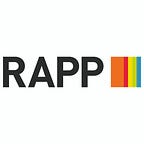On the documentary ‘Disclosure’ and transgender representation in advertising
Our CEO Chris Freeland gives his thoughts on the film and what the advertising industry can do to create real transgender visibility.
For Pride 2020 our agency focused on LGBTQ+ People of Colour and the transgender community. We held an agency-wide screening of the Netflix documentary film Disclosure (2020) to help us better understand what we can do as media makers to support the transgender community.
Here is a conversation with our CEO Chris Freeland about his observations and reflections.
What stuck with you the most? Is there anything you can’t stop playing over in your mind?
First, some important stats I noted from the film:
· 80% of Americans have never met a transgender person — meaning it’s likely this is also the case for transgender people themselves.
· The unemployment rate for transgender folks is x3 higher than the national average while transgender people of colour experience x4 greater unemployment.
Visibility for transgender people and their authentic stories is clearly critical to correcting these injustices — it has to change.
There is quite simply so much that isn’t discussed as a part of public discourse when it comes to the representations and treatment of transgender people in the media. For example, trans bodies are objectified by media producers to the point that they obscure trans people from the stories being told about them — whether it’s a fixation on surgery or writing them into stories where they are made to incur illness, violence and death because of their transness. It only perpetuates ignorance and reinforces dangerous misconceptions that must be challenged.
That said, some transgender individuals feel they have no other choice but to ‘live stealth’ to avoid being objectified. Some view hiding away this part of their identity as a means of survival… but regretfully this means important success stories of transgender people get buried.
Transgender people have always existed and yet, we as a society are ignorant of their lived experiences. Overall, the media to date has done a terrible job of taking ownership of their responsibilities to transgender actors, transgender stories and the greater community. This leaves transgender people to suffer the ramifications of having inaccurate and incomplete versions of ‘their story’ being told.
The film is based around Hollywood’s influence on trans perception — in what ways is our impact in advertising similar? How is it different?
I’d say film has the power to build in complexity and tell more elaborate stories, which can be incredibly powerful in its own right. I feel advertising, however, has the power to normalise representation more easily — our job is to speak to ordinary people about ordinary life, so a 30-second spot on television, a crafted email or social post can be made naturally inclusive. That being said, how advertisers go about doing this is critical to getting it right. We have to take this responsibility seriously, which means we need to take our direction from the trans community ahead of all else.
What are some ways we can change how we do things to ensure we’re creating accurate, real-life representations of people in our work?
I would like to see us, and everyone else in advertising, create inclusive briefs. We are looking at building in bias checks and ways to challenge our vision, perceptions and solutions when answering briefs. It will require some experimentation, but it will be brilliant when we get there.
We also need to be more equipped and feel empowered to challenge our own and each other’s go-to notions. We’re not here to make the same ad ten times over. I mean, how long did it take the industry to stop casting wealthy white guys in car ads?
Ultimately, I think if we focus on changing representation to improve the lives of transgender people off-screen, we will be successful here.
